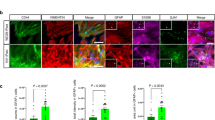Abstract
The cause of Parkinson’s disease is still unknown. Nonetheless, there are some generally accepted hypotheses with respect to the cascade of dopaminergic cell degeneration. One of the factors is a decrease in respiratory chain complex I activity. This enzyme abnormality is only found in substantia nigra pars compacta. It is not currently known whether this is due to a genetic abnormality of the nuclear or mitochondrial genome or to an exo- or endotoxin. To date, no specific abnormality of the mitochondrial genome has been detected, although ageing leads to deletions in up to 5% of all mitochondrial genome molecules in the brain. There is controversy whether this complex I defect is also detectable in muscle or blood cells. It is our conviction that the considerable overlap between blood cells from normal controls and patients with Parkinson’s disease means that such measurements are not distinctive for the two conditions. A decrease in complex I activity in post-mitotic cells may be one of the crucial factors for cell death.
Similar content being viewed by others
Author information
Authors and Affiliations
Rights and permissions
About this article
Cite this article
Reichmann, H., Janetzky, B. Mitochondrial dysfunction – a pathogenetic factor in Parkinson’s disease. J Neurol 247 (Suppl 2), II63–II68 (2000). https://doi.org/10.1007/PL00007763
Issue Date:
DOI: https://doi.org/10.1007/PL00007763




